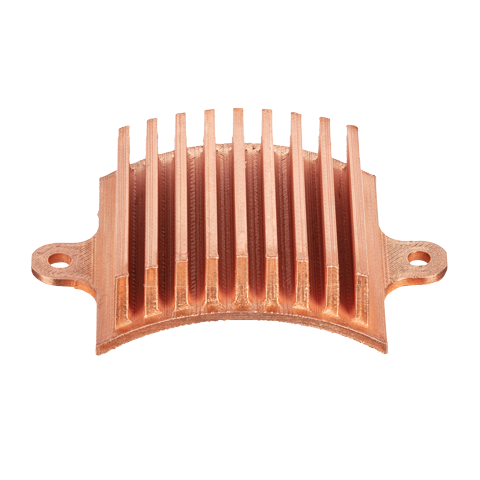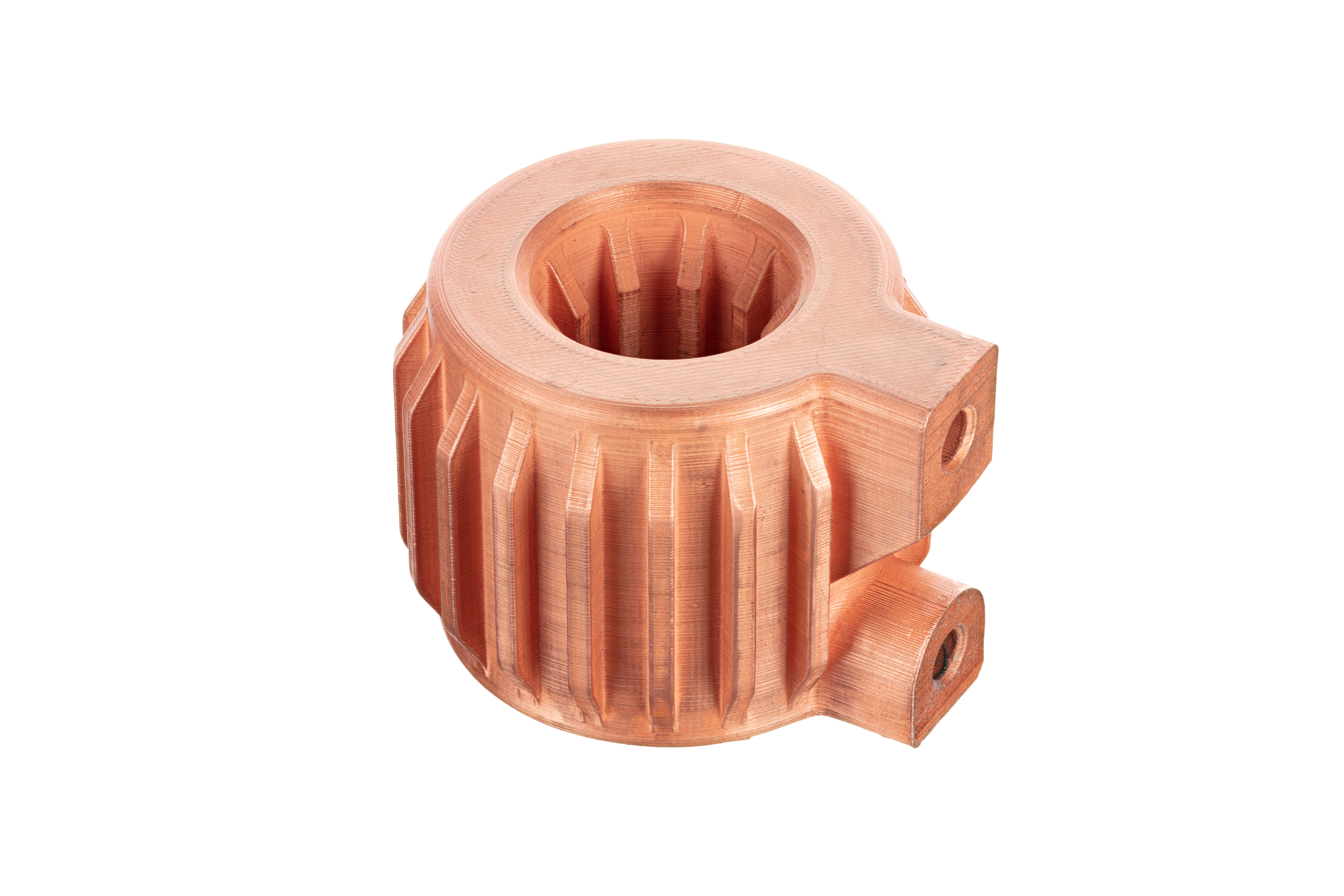Desktop Metal has announced the latest material for its Studio System metal 3D printer: pure copper. This is a significant development for the product line, as it enables the production of unique copper parts using a comparatively low-cost desktop 3D printing system. As we’ve discussed before, copper represents a significant opportunity in the 3D printing industry for its use as a good conductor of heat and electricity. This has seen the metal become ubiquitous in electronics and highly used for the production of heat exchangers and induction coils.
Copper is a unique material in the 3D printing space, as it is difficult to 3D print using the most widespread metal 3D printing technology, powder bed fusion. This is because the material’s high reflectivity, which leads to low energy absorption and, thus, requires higher energy output from the laser or electron beam. This, in turn, can cause splattering and other issues that can result in poor part quality or machine damage. One of the methods used to counteract this problem has been the 3D printing of copper alloys, such as chromium zirconium copper, which reduces the desired properties of the material, such as heat and electrical conductivity.
For this reason, this development for Desktop Metal is an interesting one. The company’s Studio System relies on an extrusion-based process not unlike fused deposition modeling to 3D print a part made up of metal powder within a polymer binder. The binder is then removed in a chemical debinding process before the item is placed in a furnace for sintering.
Jonah Myerberg, CTO and co-founder of Desktop Metal, said of the news:
“Known for its excellent thermal and electrical conductivity, copper is a highly desired material for a variety of industries and applications, such as heat exchangers and electrical components for heavy industries to consumer products. Whether for heat sinks, electrical motor and power grid components, or resistance welding electrodes, 3D printed copper on the Studio System is an ideal choice for manufacturing parts featuring complex geometries.”
The company has 3D printed demonstrator pieces for the material for various applications in different verticals. For manufacturing, Desktop Metal has produced an electrode holder that can be used to secure electrodes in place during resistive nut welding. The part highlights the benefits of 3D printing by incorporating internal conformal cooling channels, which makes it possible to more quickly remove heat from electrodes, resulting in a better weld and greater part longevity.
For the automotive sector, the company 3D printed a heat sink, necessary for heat dissipation in electric motors. In this case, the part conforms to the shape of the motor, allowing for more efficient heat distribution. The fins on the part would be difficult to machine, but do not pose a problem for 3D printing.
A helical heat exchanger was 3D printed to demonstrate the possibilities for chemical processing, as the internal helical channels only possible with 3D printing allow for cooling fluid to flow through it. A bus bar for local high current power distribution was also 3D printed for the energy sector. Internal channels allow the bar to cool more quickly when power is being transferred. Without 3D printing, this item would have to be assembled from multiple individual components.
Just as Desktop Metal does not have a monopoly on this type of bound metal printing, it also does not have a monopoly on pure copper for bound metal printing (worth noting here that “bound metal printing” is meant to be a generic term for this type of process distinct from Desktop Metal’s trademarked “bound metal deposition”). Earlier this year, Markforged announced the availability of copper for its own bound metal printing technique that is similar enough to Desktop Metal’s that there was a lawsuit over the technology.
Regardless of whose equipment one buys, these developments certainly lower the barrier to entry for 3D printing with copper, opening up a range of possibilities. In addition to the applications already noted here, copper 3D printing is widely used for the production of induction coils and, due to the COVID-19 pandemic, we have seen it applied to antimicrobial products, as well, such as ExOne’s copper filters. Altogether, this has led to increased overall use of copper in the 3D printing industry, with the “Copper Additive Manufacturing 2020–Market Database and Outlook” report from SmarTech Analysis projecting that the segment over 1.4 million kilograms of copper powder, both pure copper and copper alloys, will ship for AM use by 2029.
Subscribe to Our Email Newsletter
Stay up-to-date on all the latest news from the 3D printing industry and receive information and offers from third party vendors.
Print Services
Upload your 3D Models and get them printed quickly and efficiently.
You May Also Like
Titomic Opens New U.S. Facility in Huntsville to Boost 3D Printing for Defense
Australian company Titomic (ASX: TTT) has expanded into Huntsville, Alabama, opening a new U.S. facility that brings its advanced metal manufacturing technology closer to key defense and aerospace hubs. The...
Steadfast XO: Will USVs and UUVs Disrupt Existing Naval Power?
A quiet revolution is underway in Unmanned Surface Vehicles (USV) & Unmanned Underwater Vehicles (UUV). Ukraine didn’t have much of a Navy when Russia invaded, but has been able to...
Recipe for an AM Cluster: ADDIMAT’s Zubizarreta on the Making of the Spanish AM Ecosystem
One of the most significant themes in the global manufacturing sector throughout the last decade has been the nurturing of existing economic clusters and the seeding of new ones by...
Nikon Advanced Manufacturing & America Makes to Develop Aluminum Powder Dataset
Nikon Advanced Manufacturing Inc., the Long Beach-based end-to-end metal additive manufacturing (AM) firm, has announced that the company is partnering with the Manufacturing USA Institute America Makes to develop an...





































